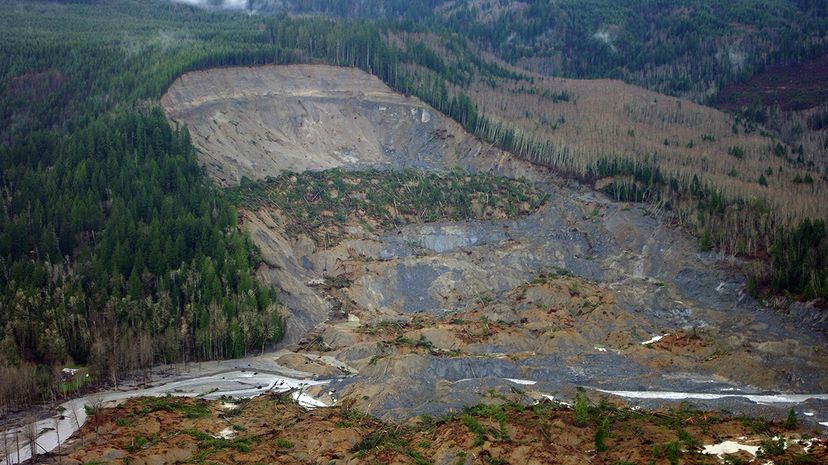Mass Movements

As we discussed previously, a landslide is only one of the many kinds of mass movements. Gravity is also responsible for several different forms of sediment relocation. Other major categories of mass movement include flows, creep and slump.
Flows are the result of water mixing with sediment to form a soupy mass of rock, water, soil and other materials. The resulting mixture slips downhill. Mudflows and avalanches are examples of this type of mass movement that occur rapidly and can be quite destructive.
Advertisement
Creep is a type of gradual flow, one that can take several years to unfold. With creep, sediment moves slowly down an incline. The adherence of the sediment to the bedrock is hampered, but not completely destroyed. Creep often occurs in areas that have experienced repeated freezing and thawing, which changes the structure and composition of the soil. Creep can even occur on gentle slopes. Have you ever seen trees or telephone poles bent at strange angles in relation to the ground? Creep is the culprit [source: United States Geological Survey].
In slump, a large segment of sediment breaks off in one piece rather than in lots of segments. It occurs when the base can no longer support the weight of what's on top. The sediment involved in slump is usually wet or claylike, and water is often the factor that causes it to fall. Water either adds mass to the top layer of sediment or wears the soil away at the base, weakening the connection between the top and bottom layers. You've probably observed slump if you've ever gone to the lake or the beach and stepped on some wet sand overhanging the shore: The whole chunk simply drops in one piece.
To better understand landslides and other mass movements it helps to learn a bit more about the two contributing processes of weathering and erosion, which we'll do next.